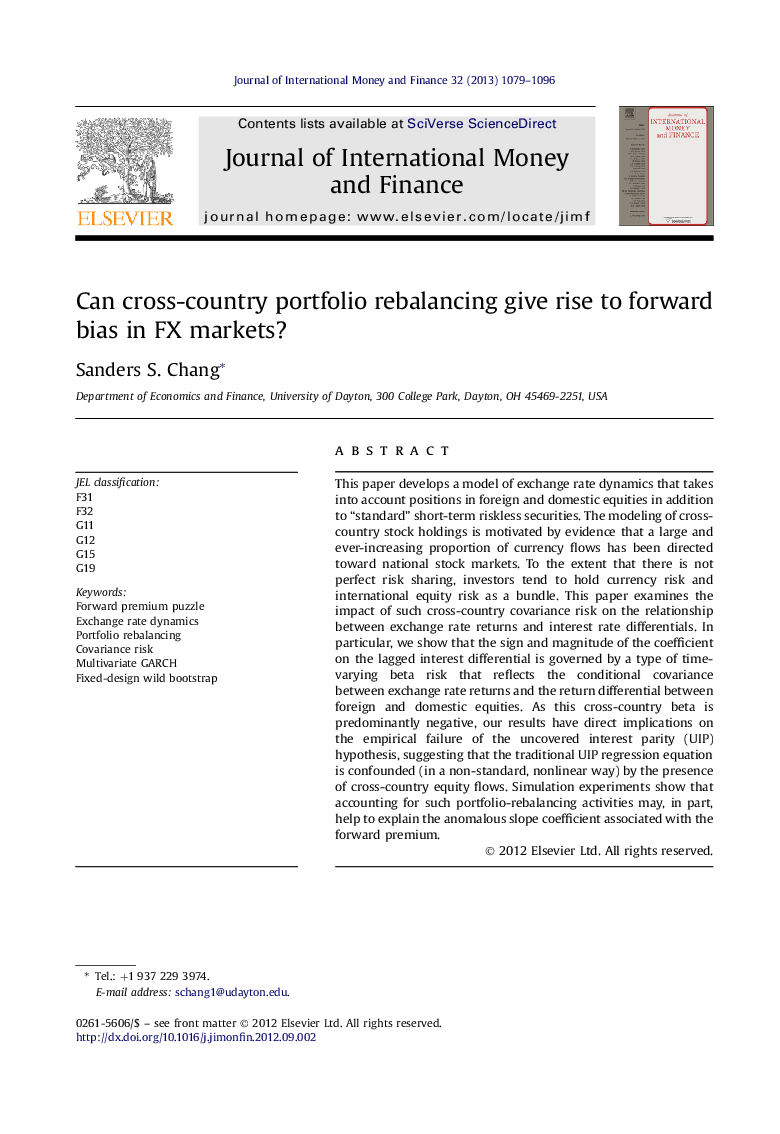| Article ID | Journal | Published Year | Pages | File Type |
|---|---|---|---|---|
| 7366459 | Journal of International Money and Finance | 2013 | 18 Pages |
Abstract
This paper develops a model of exchange rate dynamics that takes into account positions in foreign and domestic equities in addition to “standard” short-term riskless securities. The modeling of cross-country stock holdings is motivated by evidence that a large and ever-increasing proportion of currency flows has been directed toward national stock markets. To the extent that there is not perfect risk sharing, investors tend to hold currency risk and international equity risk as a bundle. This paper examines the impact of such cross-country covariance risk on the relationship between exchange rate returns and interest rate differentials. In particular, we show that the sign and magnitude of the coefficient on the lagged interest differential is governed by a type of time-varying beta risk that reflects the conditional covariance between exchange rate returns and the return differential between foreign and domestic equities. As this cross-country beta is predominantly negative, our results have direct implications on the empirical failure of the uncovered interest parity (UIP) hypothesis, suggesting that the traditional UIP regression equation is confounded (in a non-standard, nonlinear way) by the presence of cross-country equity flows. Simulation experiments show that accounting for such portfolio-rebalancing activities may, in part, help to explain the anomalous slope coefficient associated with the forward premium.
Keywords
Related Topics
Social Sciences and Humanities
Economics, Econometrics and Finance
Economics and Econometrics
Authors
Sanders S. Chang,
